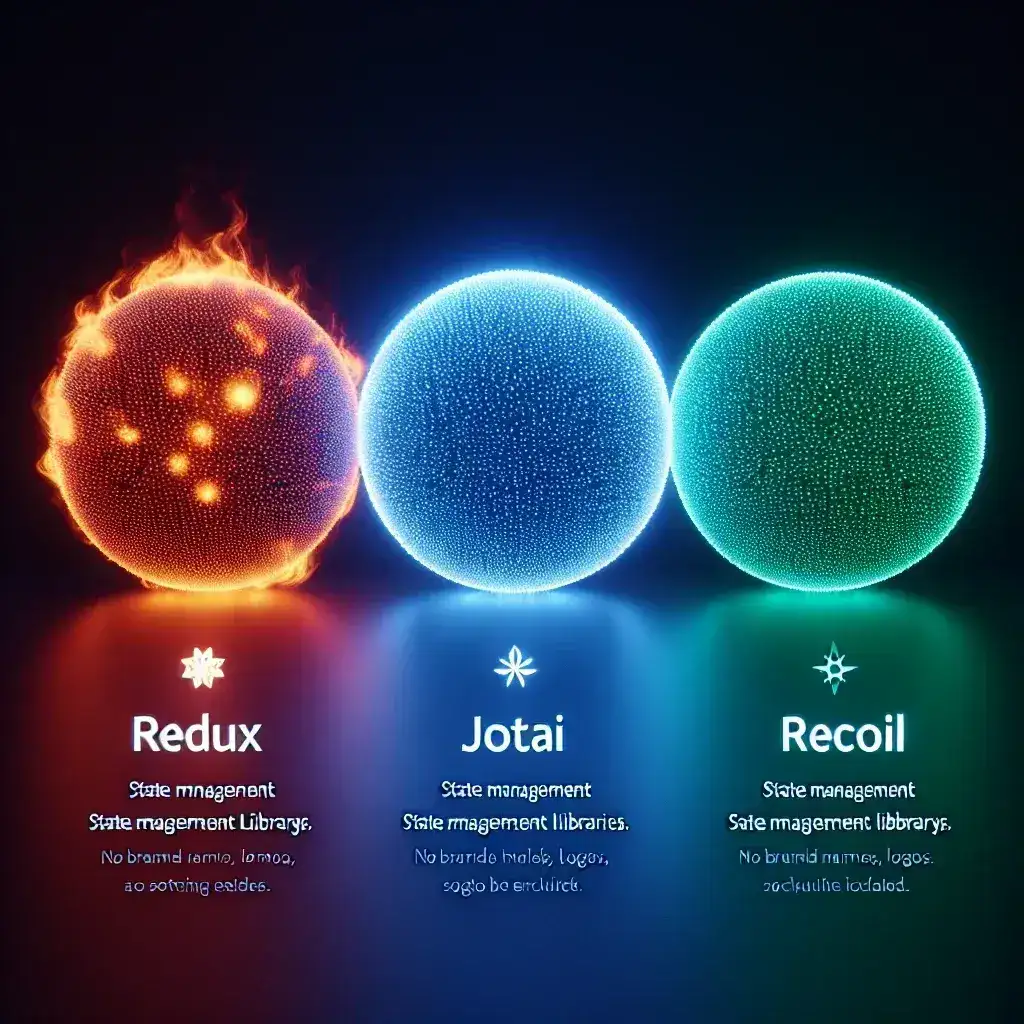State management is a critical aspect of building scalable and maintainable web applications. As the complexity of web applications grows, so does the need for robust state management solutions. In this article, we will compare three popular state management libraries in the JavaScript ecosystem: Redux, Jotai, and Recoil. Each of these libraries offers unique features and benefits, making them suitable for different use cases and project requirements.
Overview of State Management Libraries
State management libraries help manage the state of an application in a centralized and predictable manner. They provide tools and patterns to manage state changes, making it easier to develop and maintain large-scale applications. Here’s a brief overview of the three libraries we will be comparing:
- Redux: A predictable state container for JavaScript apps, widely used in the React ecosystem.
- Jotai: A simple and efficient state management solution for React, focusing on performance and ease of use.
- Recoil: A state management library for React that aims to be lightweight and easy to use, developed by Facebook.
Redux: The Tried and True
Redux has been a cornerstone of state management in the React ecosystem for many years. It follows a unidirectional data flow, where actions are dispatched to a store, which then updates the state. Redux is known for its predictability and the ability to debug state changes easily. However, it can be verbose and has a steeper learning curve compared to other libraries.
Key Features of Redux
- Centralized Store: A single source of truth for your application’s state.
- Action Creators: Functions that return actions to be dispatched to the store.
- Reducers: Pure functions that handle state transitions based on actions.
- Middleware: Extend Redux’s capabilities with additional functionality, such as logging, asynchronous actions, and more.
- Developer Tools: Powerful tools for debugging and inspecting state changes.
Use Cases for Redux
Redux is ideal for large-scale applications with complex state management requirements. It is particularly useful when you need:
- A single source of truth for your application’s state.
- Centralized and predictable state management.
- Advanced debugging and development tools.
- Scalability and maintainability.
Jotai: Simplicity and Performance
Jotai is a lightweight and efficient state management solution for React. It aims to provide a simple and performant alternative to Redux. Jotai uses atoms to represent state, and it automatically updates components when the state changes. This makes it easy to manage state without the boilerplate code often associated with Redux.
Key Features of Jotai
- Atoms: Units of state that can be read and written by components.
- Efficient Updates: Components are re-rendered only when the state they depend on changes.
- Compose Atoms: Combine multiple atoms to create more complex state.
- No Boilerplate: Minimal setup and configuration required.
Use Cases for Jotai
Jotai is a great choice for applications that:
- Require a simple and lightweight state management solution.
- Need to manage state with minimal boilerplate code.
- Benefit from efficient and performant state updates.
Recoil: Lightweight and Scalable
Recoil is a state management library developed by Facebook. It combines the best features of Redux and Jotai, offering a lightweight and scalable solution for managing state in React applications. Recoil uses atoms to represent state and selectors to derive state, making it easy to manage both simple and complex state trees.
Key Features of Recoil
- Atoms: Units of state that can be read and written by components.
- Selectors: Derived state that can be computed from atoms.
- Asynchronous State: Handle asynchronous operations and state updates seamlessly.
- No Boilerplate: Minimal setup and configuration required.
- Scalability: Designed to handle large and complex state trees.
Use Cases for Recoil
Recoil is suitable for applications that:
- Need a lightweight and scalable state management solution.
- Require both simple and complex state management capabilities.
- Benefit from derived state and asynchronous operations.
Comparing the Libraries
Complexity
Redux is the most complex of the three, with a steeper learning curve and more boilerplate code. This complexity, however, comes with the benefit of advanced features and a robust ecosystem. Jotai and Recoil are both simpler and more lightweight, making them easier to learn and use, especially for smaller projects.
Performance
Jotai and Recoil are generally more performant than Redux, thanks to their efficient state update mechanisms. Jotai’s minimal re-renders and Recoil’s derived state and asynchronous capabilities contribute to better performance, especially in large applications.
Scalability
Redux is the most scalable of the three, making it a good choice for large and complex applications. Recoil also scales well, thanks to its derived state and asynchronous features. Jotai is more suitable for smaller projects or applications with simpler state management needs.
Community and Ecosystem
Redux has a large and mature ecosystem, with a wide range of middleware and developer tools. Recoil and Jotai have smaller but growing communities, with fewer additional tools and resources available.
Conclusion
Choosing the right state management library depends on your project’s specific requirements and the trade-offs you are willing to make. Redux is a robust and scalable solution with a mature ecosystem, making it suitable for large and complex applications. Jotai is a lightweight and performant solution that is easy to learn and use, ideal for smaller projects. Recoil offers a balance between simplicity and power, making it a versatile choice for a wide range of applications.
By understanding the key features and use cases of each library, you can make an informed decision that aligns with your project’s goals and needs.









